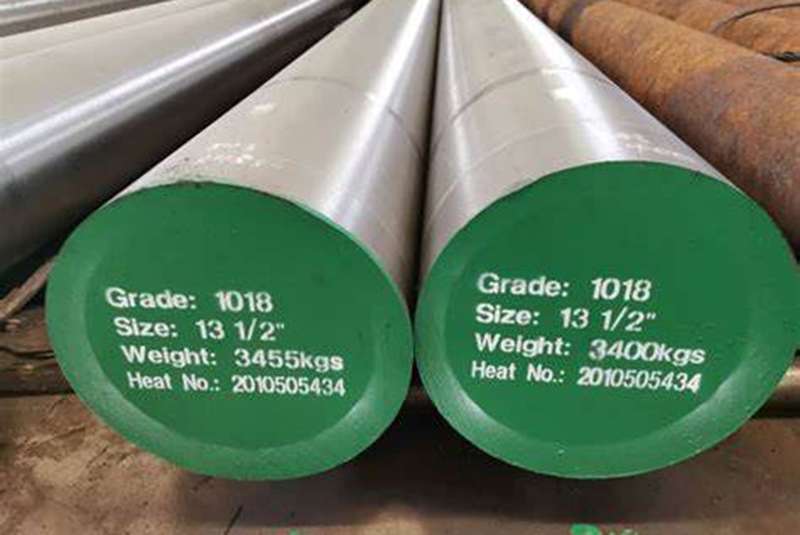Introduction

Serving as the universal raw material choice across countless critical construction, mechanical and general engineering sectors, carbon steel round bars offer an unparalleled combination of versatility, weldability, machinability and cost-effectiveness driving their pervasive usage. Available in a wide variety of grades and dimensions, identifying the optimal carbon steel bar specification hinges on factoring in complex interplays between alloying options balancing structural properties, manufacturability needs and economic influences based on each application’s demands.
Key Properties and Profiles of Carbon Steel Bars
Broadly traded standard carbon steel bars adhere to established chemistry limits and mechanical specifications ensuring reliable baseline attributes of:
● Tensile Strength – The maximum load bearing capacity defining the stress limits
● Hardness – A measure of resistance against surface indentation and wear
● Machinability – The relative ease and cost-effectiveness of shaping processes
● Weldability – Sensitivity ratings guiding proper fusion and joining approaches
Additionally, carbon content percentages between 0.10 to 0.60% also characterize bar categorization for general differing usages:
| Bar Grade | Carbon % | Common Applications |
|---|---|---|
| Low carbon | ≤ 0.30% | General fabrication; Easy welding |
| Medium carbon | 0.30 – 0.50% | Mechanical shafts, gears etc |
| High carbon | ≥ 0.50% | High strength parts like springs |
Beyond these overarching specifications, application-specific customization occurs through diameter, shape, added alloys and more detailed testing for specialized engineering scenarios.
Key Role of Dimensions

While chemical properties tuning ensures baseline capacities, meeting sizing needs is paramount for carbon steel bars serving as foundations stabilizing entire structures through:
● Diameters – Range availability from minuscule 1 mm to massive 500 mm for accommodating small fasteners to enormous supporting pillars
● Lengths – Customizable up to 6 meters as single pieces avoiding joining needs for reliability
● Wall thickness – Hollow bars with calibrated walls withstand loading stresses in axles, pump housings etc.
● Square/hex profiles – Provide optimal surface area and dimensional stability for transmission assemblies
Careful dimensional design transfers load-bearing potential into usable mechanical stability.
Enhanced Capabilities Through Additional Alloying
To amplify certain desired properties in carbon steel beyond innate element ranges, producers use supplementary ‘alloying’ by blending constituents like:
● Manganese (Mn) – Upgrades yield point, wear ability and hardness
● Silicon (Si) – Improves corrosion and heat resistance capacities
● Nickel (Ni) – Adds toughness for dynamic duty parts to resist shock loading
● Sulfur (S) – Increases machinability cutting ease but reduces weldability if excessive
Thus by regulating percentages of Mn, Si or other elements, manufacturers can customize round bars for clients’ working conditions.
Machining and Fabrication Considerations
While enhanced properties empower stability, realizing application reliability also depends on machinability and fabrication suitability:
● Rating weld-decay risks helps minimize potential failures, especially in high carbon bars.
● Establishing production sequence feasibility prevents mid-way roadblocks.
● Comparing tool wear repercussions controls shaping costs.
● Verifying availability of necessary machining capabilities like turning, grinding etc.
Evaluating these additional factors ensures smoother manufacturing logistics.
Conclusion:Carbon Steel Round Bar
● Carbon steel bars offer unmatched versatility bridging structural engineering and mechanical domains through balanced property profiles
● Dimensional availability allows suitability spanning tiny precision components to gigantic supporting structures
● Custom alloying strategies enable tailored optimization for particular stability functionality goals
● Machinability indexes supplement chemistry and sizing data for streamlined fabrication
Armed with this all-encompassing perspective of interacting property and production nuances governing real-life reliability, engineers can proficiently specify the high-quality carbon steel round bars uniquely fulfilling stability duties over the application’s intended duty life.
FAQs
Q:What modern quality checks help validate carbon steel bar integrity?
Ultrasonic flaw detection, detestable particle analysis and corrosion resistance testing verify freedom from internal defects ensuring performance dependability.
Q:How do cost pressures influence alloying strategies?
While high-alloy grades offer amplified properties, engineers balance incremental stability gains against raw material and fabrication cost rises to deliver optimized value.
Q:What are applicability limitations needing alternative metals?
For exceedingly high temperature or radiation-exposed uses, specialized nickel and titanium alloys surpass carbon steel property extremes.
